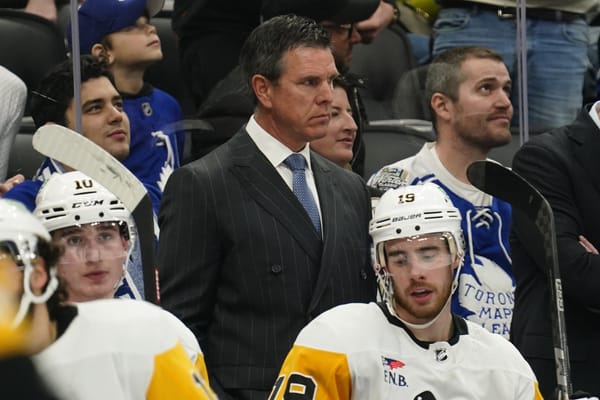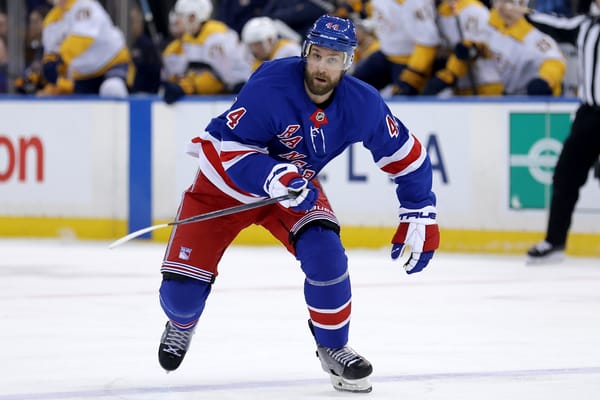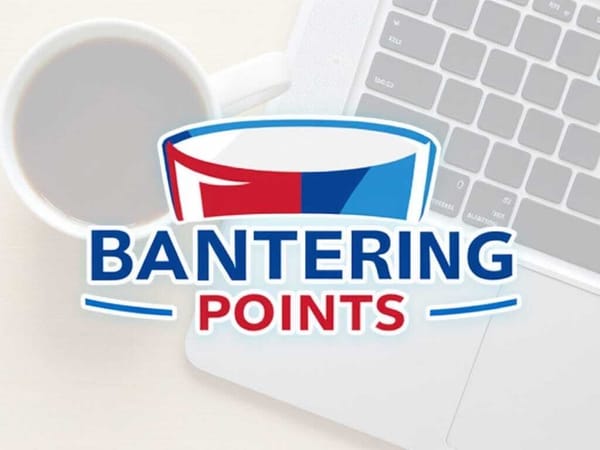Rangers Have Lineup Decisions to Make As Mika Zibanejad’s Return Draws Near
Mika Zibanejad has not played for the New York Rangers since leaving a game vs. the Boston Bruins on October 27, and the coaching staff has some decisions to make for when he returns to the lineup. Those decisions are on the horizon as the Rangers’ top center skated on his own on Sunday, and could be in the lineup for Monday’s game vs. the Ottawa Senators.
Mika Zibanejad skated prior to practice today and is making big strides, per Quinn, who did not rule him out of playing tomorrow, saying he has to consult with the medical staff before giving a definitive answer.
— Dan Rosen (@drosennhl) November 3, 2019
Normally when a key player leaves the lineup, it’s easy to accommodate their return, because often times someone who slid up will move back down in the lineup. But in the Rangers’ case they currently have two top lines clicking, and an abundance of forwards on the roster which make matters somewhat difficult.
Ryan Strome was the first man up with Zibanejad sidelined, and over the last three games, including the game Zibanejad left, he’s averaged 21:34 a game while posting a line of 2-3-5. The Rangers also recalled Filip Chytil after the loss to Boston, and in two games he’s scored twice while averaging 17:01 a night.
If Zibanejad is good to go vs. Ottawa there’s a number of options the team could take for the interim, and before we break them down, here’s how the lines looked during the team’s 2-1 victory over Nashville.
Artemiy Panarin — Ryan Strome — Jesper Fast
Chris Kreider — Filip Chytil — Pavel Buchnevich
Brendan Lemieux — Brett Howden — Kaapo Kakko
Micheal Haley — Lias Andersson — Brendan Smith
With Zibanejad healthy the Rangers have five centers, and a short term fix would involve moving someone to the wing for a game until the team can practice collectively.
The Rangers are off on Tuesday, and then play back-to-back games vs. Detroit on Wednesday, and then travel to Carolina for a game on Thursday. The team is then off until Sunday afternoon at home vs. the Florida Panthers.
In this case Strome would be an easy candidate, because he has the ability to play right wing. Because of his success over the last few games, the coaches most likely want him to remain in a leading role. But since Kreider-Chytil-Buchnevich are having success, it may have to be around them. So, here’s how the top two lines could look:
Panarin — Zibanejad — Strome
Kreider — Chytil — Buchnevich
The question then becomes where to put Jesper Fast, who was skating on the top line. The answer is most likely on the third line. But if Fast joins, who goes? Lemieux seems like the most likely option if they’re comfortable with Fast on his off wing — then he could skate with Howden and Kakko, and Lemieux could take Micheal Haley’s spot on the fourth line.
This scenario represents the fewest amount of changes, and quite honestly that make sense because the team is on a two-game winning streak, and there’s no real reason to mess with a winning lineup.
From a tactical standpoint Strome remains with two players who can drive a line, and that leaves him a position where he can shoot the puck. It also leaves together the second line which has shown a lot of spice and spark through two games.
The third line would give Kakko a winger who loves doing the dirty work along the boards and a center who will push the puck on net for rebounds. And then the fourth line would have a gritty grinder with skill in Lemieux, a very responsible center in Andersson, and Brendan Smith; with the addition of Lemieux, the fourth line should have more offensive upside, which could lead to more minutes for them.
But we’ve seen this season that David Quinn isn’t afraid to tinker — even after wins — and there’s always the chance he scrambles things a little more than I suggested. If he were to do that, here’s what I think the lines would look like:
Panarin — Zibanejad — Kakko
Kreider — Chytil — Buchnevich
Lemieux — Strome — Fast
Haley — Howden — Smith
I think there’s the chance that Quinn would want to keep Strome at center, and if that were the case Andersson a scratch because he’s simply averaged the fewest ice time among Rangers centers.
While Strome has had success in the top six, putting him with two industrious players like Lemieux and Fast isn’t the worst thing in the world for him, although if Quinn wanted a little extra skill on that line it makes sense to swap Fast with Kakko. Then the fourth line is simply what is left, and that’s Haley, Howden, and Smith.
But the problem here is that having Andersson as a healthy scratch isn’t great for his development. Neither is playing him for as few minutes as he’s seen, but with those minutes in mind, and the team having five centers, someone is going to be the odd man out. It’s true that him and Howden have taken spins on the wing in the past, but so far this season it appears that the brain trust wants them down the middle.
With that said, if the Rangers want to keep players in their natural position for the foreseeable future, a demotion of a player to Hartford would make the most logical sense as the team recently lost first-line center Filip Chytil. But the question becomes who, and why?
If we are looking at things from a meritocracy, Howden is the player that should be sent down, and that’s because he’s had more time to prove himself and his result indicate that there’s room for improvement via a stint in the AHL. This season his counting stats include two goals, one assist, and an average of 15:27 a game in ice time through 11 games played. Last season’s line includes six goals, 17 assists, and an average of 14:56 a game through 66 games.
The 2018-19 season saw Howden skate 774 minutes at 5v5, and his line includes a GF% of 42.16, a CF% of 41.62, and an xGF% of 41.91. His numbers relative to the rest of the teams in those respective categories include -3.99, -4.13, and -6.13.
This season’s sample is small and there’s still shot location data coordinates to be corrected which impacts xG calculations, but his line includes 128 minutes 5v5, a 36.68 GF%, a 39.02 CF%, and an xGF of 37.34%.
Lias Andersson logged 417 minutes 5v5 last season, and posted a GF% of 29.81, a CF% of 41.53, and an xGF% of 41.93. While these numbers look bad, realize that he spent a lot of time in the bottom six, primarily on the fourth line — though he didn’t do as much to warrant a chance higher in the lineup. He also shifted between wing and center which didn’t help matters. His counting stats included two goals, four assists, and an average of 10:43 a game through 42 games.
The key takeaway here is that while his actual on ice goals numbers were poor, he deserved a better fate as indicated by posting a higher xGF% rate than Howden. His shot share percentage was 0.09 off Howden’s, and a reasonable person would agree that’s a practically a wash.
As for this season, Andersson’s counting stats include one goal, and an average of 10:05 a game through 11 games. In terms of underlyings, the Rangers’ 2017 first round pick has a 33.39 GF% (-3.29 to Howden), a 39.10 CF% (+0.08 to Howden), and a 46.63 xGF% (+9.29 to Howden).
What’s impressive about these numbers is that Smith (57:40) and Haley (33:43) are his two most frequent linemates, and from there it goes Greg McKegg (24:46), Lemieux (14:55), and Fast (9:31) to round out the top five. Neither of these players are truly known for their offense, yet Andersson’s been able to help make things happen. Maybe most importantly for this team, is that he’s been one of the better players in his own end.
Howden’s most frequent linemates, on the other hand, include Kakko (55:36), Lemieux (52:09), Fast (51:19), Kreider (29:25), and Buchnevich (15:40) in the top five. There’s no question this group of players is more offensively gifted than who Andersson has skated with, so there’s less of an excuse for Howden’s poor numbers. But truthfully they make sense when you look at his struggles last year, and there’s reason to believe he’s someone who could benefit from spending time on Hartford’s top line.
Howden played 248 games in the WHL, five AHL games after his third WHL season, and played his rookie season in the NHL in 2018-19 after being acquired by the Rangers in February of 2018 as part of the Ryan McDonagh trade. While not every player needs to spend time in the AHL, I truly believe Howden is someone who could have benefited with some AHL time before becoming a full fledged pro, and there’s still time for him to do that. You could argue that 61 games in the AHL may not have been enough for Andersson, but he’s never been given a consistent shot at the NHL outside of the fourth line, so it is hard to know what he’s capable of offensively.
That said, I am not saying this is the case, but Andersson may very well end up being just an elite defensive forward, and not much more than that. There’s nothing wrong with that, although it isn’t what you want from a No. 7 overall pick, and there’s far worse ways to earn a living.
I would hate if that’s the role the Rangers have in mind for him, and that would appear to be the case based on how they utilized him versus how they’ve used Howden. Unfortunately things would still be complicated if Howden were demoted, as Andersson would still have Zibanejad, Chytil, and Strome in front of him.
The somewhat long term solution — in order to given Andersson a runway to prove that he can fly in the top nine — to that problem would see Strome parked on the wing, and if that were the case, here’s what the lines could look like.
Panarin — Zibanejad — Kakko / Strome
Kreider — Chytil — Buchnevich
Fast — Andersson — Kakko / Strome
Lemieux — Nieves — Smith
Boo Nieves is an ideal fourth-line center for this team, and personally I feel he offers more than McKegg in the long run. It isn’t going to happen, but I feel it is worth pointing out. While we are on the subject of things unlikely to happen, ideally it would be beneficial if the Rangers were to continue keeping Staal out of the lineup more than he’s in; if that were the case it would allow Smith to go back on defense in order to give Libor Hajek — someone who has shown promise and some struggles — an opportunity to get a breather now and then, and potentially more development time in Hartford.
I know this was a lot to take in, but that’s the situation the Rangers find themselves in as a franchise going through a build that’s trying to juggle player development while being cognizant of pending free agents who could fetch a nice return at the trade deadline.
I’ve said it a million times before and I’ll say it here now, this is a season in which the Rangers need to find out as much as they can about their young players. Ideally they will be able to assess who can and can’t perform certain roles, and that will enable the front office to create a list of needs to fill.
Panarin is here to stay as a top line winger, so consider that one thing checked off. The same can be said about Zibanejad. With Kreider, an impending free agent, it is important to see if Buchnevich will take the next step and be a solid top-six contributor.
The list goes on, and on, and that’s why it is important to give players like Lias Andersson an opportunity. Because the fact of the matter is the Rangers won’t have problems finding someone to be a fourth-line center when they are ready to contend for a cup. You could say the same about a third-line center, but in the salary cap era you only have so much to spend on players. It’s preferable to develop in-house, because every dollar you save can then be allocated to address even more pressing needs.
Zibanejad will be back soon, and that will set off a chain reaction. The Rangers’ brain trust has some thinking to do, and it would be nice to see them make tweaks that give the roster a chance to show what they can do over an extended period. Many have said this is a season without major expectations — and that’s true to an extent as the expectations are that the Rangers continue taking steps forward as they progress during the build.
Stats via Evolving-Hockey and Natural Stat Trick unless otherwise noted.





